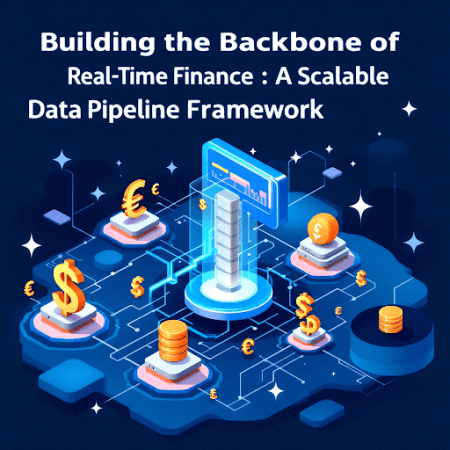
Trailblazing innovations in real-time financial technology take center stage as Anandan Dhanaraj, a seasoned technology architect specializing in data infrastructure, unveils a transformative framework designed to meet the complex demands of today's financial systems. With years of research and implementation experience, He delivers a forward-thinking architecture that's already reshaping how organizations turn raw data into strategic advantage.
The High-Speed Challenge of Financial Data
The modern financial landscape operates at breakneck speed, where millions of transactions must be processed in fractions of a second. Volatility in market conditions demands agility, while regulatory mandates impose strict accuracy and traceability. His architecture addresses this with a system engineered for real-time ingestion, contextual enrichment, optimized storage, and dynamic scaling without compromising performance under pressure.
Foundational Principles: Designing for Integrity and Insight
Four guiding principles underpin the pipeline: immutability, schema evolution, exactly-once processing, and observability. By preserving original data throughout its lifecycle and supporting dynamic schema changes, the system ensures adaptability. The exactly-once guarantee prevents duplicates and errors, while end-to-end observability gives operational teams granular insights into both performance and data quality.
Normalizing the Noise: Smart Ingestion Techniques
At the ingestion layer, the architecture employs a canonical schema model that unifies disparate formats. This normalization step includes semantic consistency across transaction types and robust error handling mechanisms. It also features stream-table joins, idempotency protocols, and nested data flattening, transforming messy, redundant inputs into clean, analysis-ready records with minimal latency.
Enriching the Core: Context-Aware Enhancements
The enrichment layer functions as the intelligence core of the pipeline. Financial transactions are layered with metadata including security details, account hierarchies, location-based pricing rules, and foreign exchange rates. Each enrichment module runs as an independent processor, enabling scalable and modular transformation. Rigorous validation ensures that enriched data aligns with compliance and analytical standards.
Efficient Storage, Agile Access
To meet massive throughput demands, the architecture incorporates a sharded Oracle database using both geographic and temporal partitioning. Indexing strategies are tuned for hybrid transactional-analytical workloads, complemented by a GraphQL API that delivers lightweight, secure, and targeted queries. Distributed caching via Apache Ignite ensures sub-millisecond response times for high-frequency access patterns.
Scaling Without Waste: Smart Resource Allocation
Financial markets are inherently spiky. To accommodate surges without overprovisioning, the system employs predictive auto-scaling based on historical patterns and real-time telemetry. CPU thresholds, memory limits, and queue depths are dynamically monitored, triggering scale-in and scale-out actions with preconfigured cooldown windows to maintain stability during volatile periods.
Benchmarking Success: From Latency to Cost
His implementation exhibits industry-leading metrics. Normal load supports 150,000 events per minute, with peaks reaching 250,000. Latency remains below 35ms for 95% of transactions, even under stress. Compared to legacy systems, the architecture slashes downtime by over 99%, reduces latency threefold, and cuts cost-per-thousand-transactions by 62%. These figures underscore the architecture's capability to meet modern demands with precision and resilience.
Unlocking New Horizons with Emerging Tech
Looking ahead, the architecture is designed to integrate machine learning for anomaly detection, predictive scaling, and natural language enrichment. Enriched, high-fidelity datasets will enable advanced analytics such as streaming graph queries and real-time portfolio valuation. The roadmap also includes pluggable third-party APIs, adaptive data structures, and seamless multi-cloud deployments to ensure the system is future-proof.
In conclusion, as financial systems evolve toward greater complexity and speed, the need for intelligent infrastructure has never been more critical. Where milliseconds matter and data is the currency of decision-making, this architectural framework sets a new standard for financial data processing. By balancing performance, scalability, and compliance, it equips institutions to handle today's demands and embrace tomorrow's innovations. The work of Anandan Dhanaraj is a timely contribution to the evolution of intelligent, responsive financial infrastructure.








